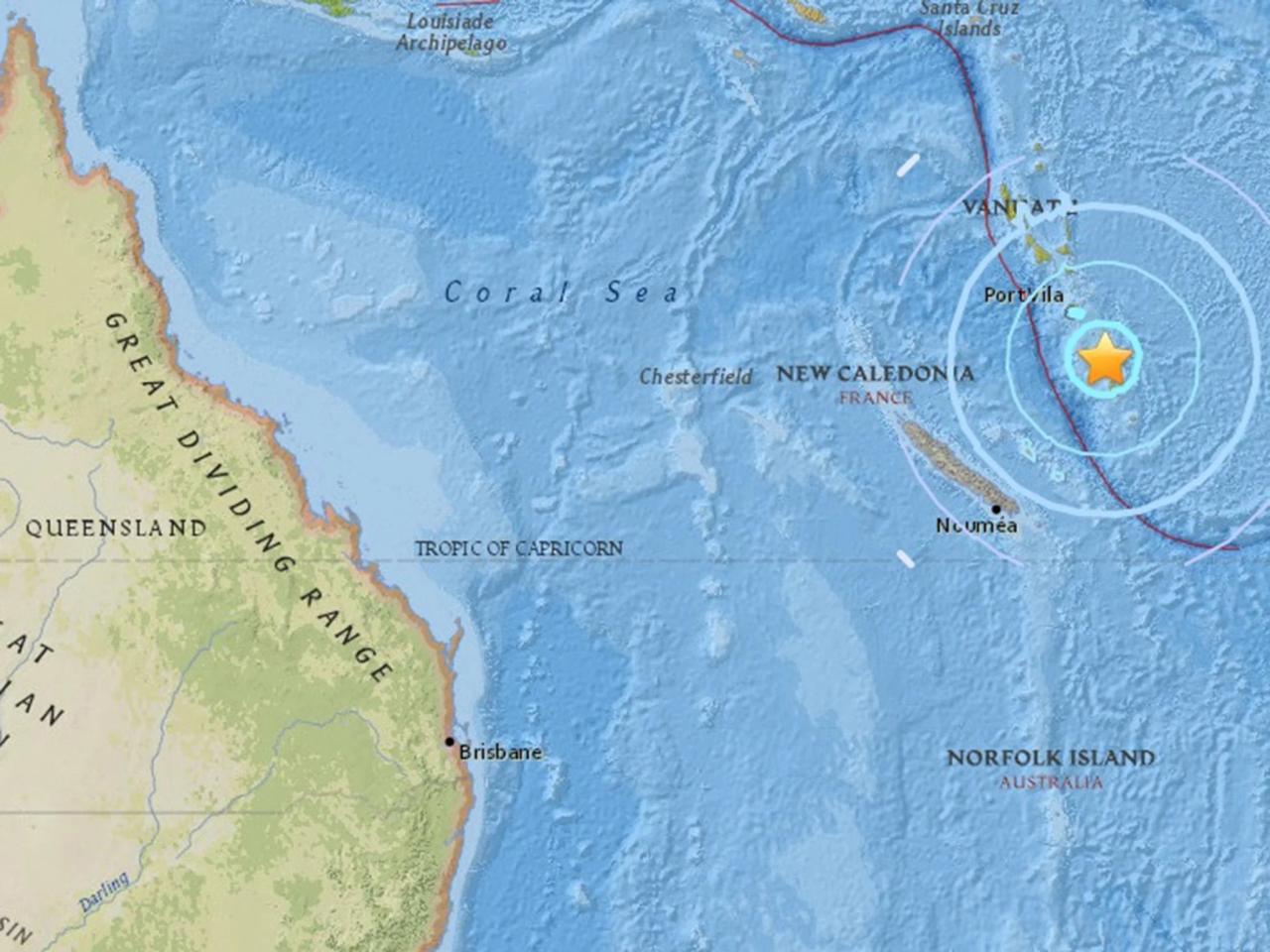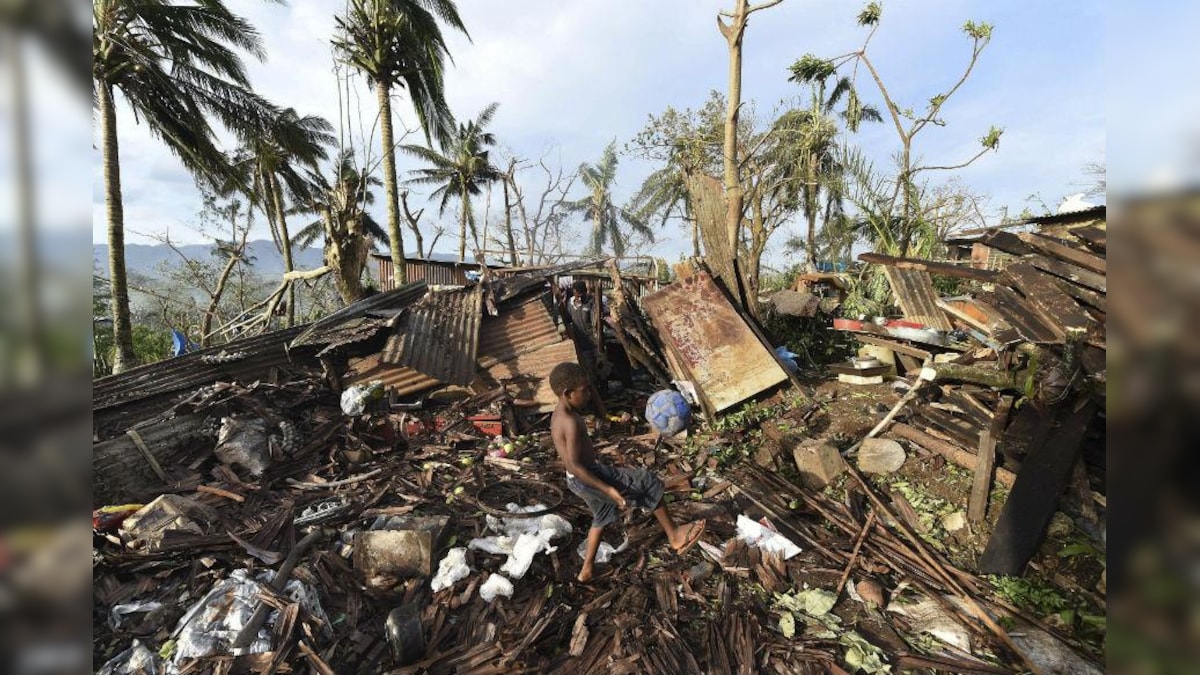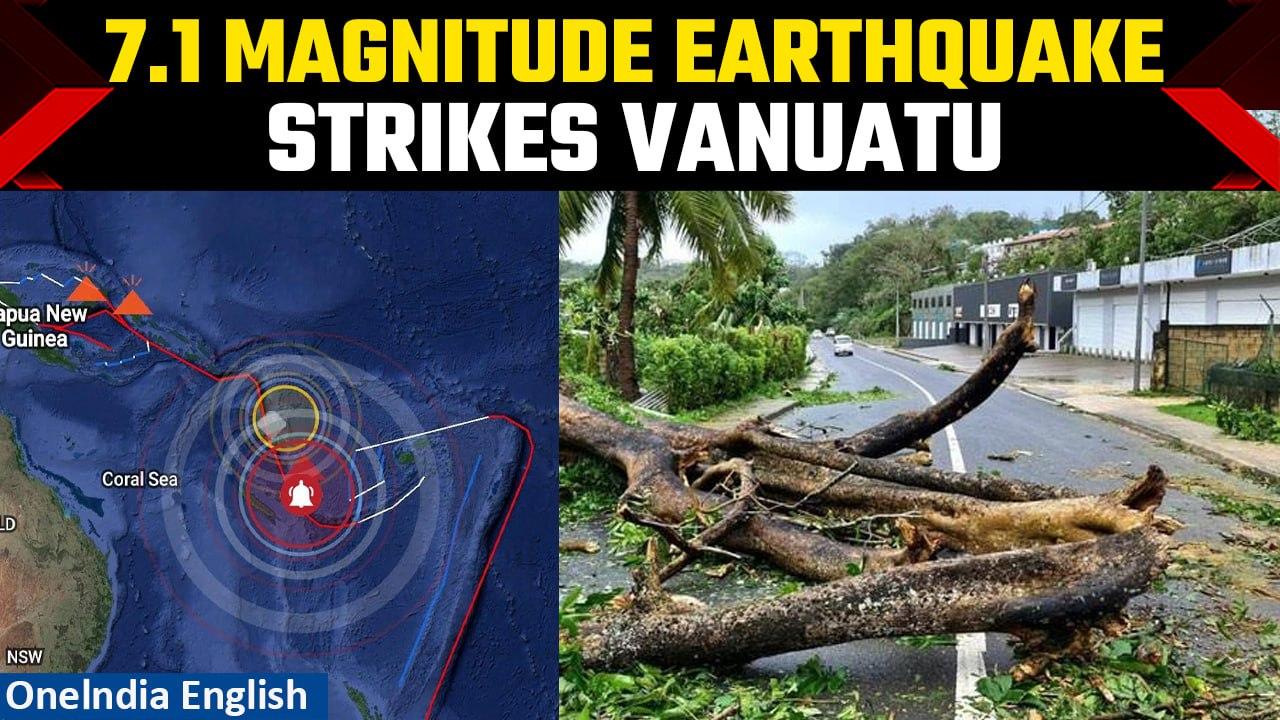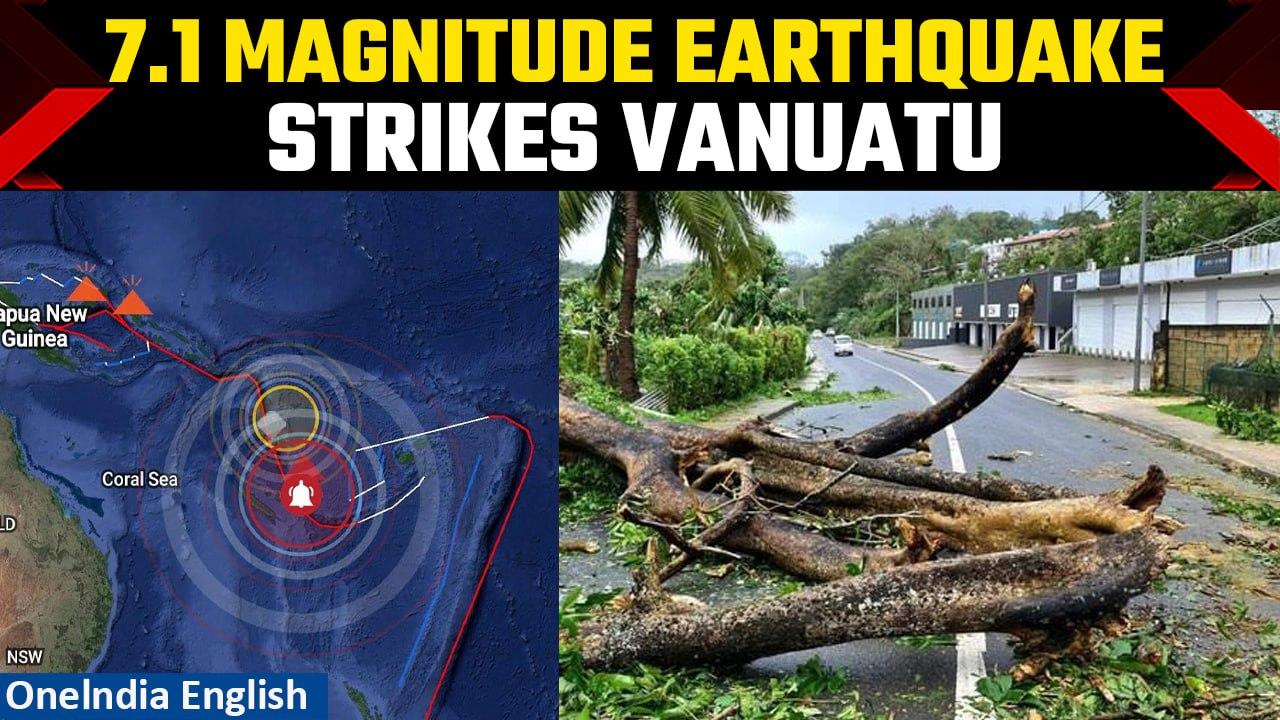Vanuatu hit by another earthquake as hundreds of Australians return home, highlighting the ongoing seismic instability in the region and the challenges of evacuating citizens from disaster zones. This recent earthquake follows a series of tremors, raising concerns about the long-term stability of the island nation and the effectiveness of its disaster preparedness measures. The repatriation of Australian citizens, while successful, also revealed logistical hurdles and underscored the need for robust emergency response protocols in the Pacific.
This event provides a crucial opportunity to examine Vanuatu’s resilience, the international community’s response, and the broader implications for the region’s seismic vulnerability.
The earthquake’s impact varied across Vanuatu, with some areas suffering significant infrastructural damage, while others experienced less severe tremors. Reports of injuries and casualties are still emerging, and the full extent of the damage is yet to be assessed. The Australian government launched a swift evacuation effort, coordinating flights and providing support to its citizens. This response, while efficient, also highlighted the ongoing need for improved regional disaster response coordination and resource allocation.
The long-term recovery process will undoubtedly require significant international aid and collaboration to rebuild damaged infrastructure and support the affected communities.
News reports detail Vanuatu’s struggle following another earthquake, as hundreds of Australians return home. The resilience shown by the Vanuatu people is truly inspiring, reminding us of the importance of global support, much like the impactful work done by organizations such as The FC Barcelona Foundation’s ‘Polseres Blaugranes’ project is the in fostering community spirit and recovery.
The ongoing situation in Vanuatu highlights the need for continued international aid and collaborative efforts to rebuild and recover.
Vanuatu Earthquake Impact and Australian Response: Vanuatu Hit By Another Earthquake As Hundreds Of Australians Return
A recent earthquake struck Vanuatu, prompting the return of hundreds of Australians while simultaneously causing significant damage and disruption across the island nation. This event underscores the vulnerability of Vanuatu to seismic activity and highlights the importance of both immediate disaster response and long-term resilience building.
Earthquake Impact Assessment

The earthquake’s immediate effects were widespread, causing damage to infrastructure across several islands. Reports indicate varying levels of damage to buildings, roads, and utilities. The precise number of injuries and casualties is still being assessed, with initial reports suggesting a range of injuries, but thankfully, limited fatalities. The tremors were most strongly felt in the central and northern regions of the archipelago, with some areas experiencing significant ground shaking.
Compared to previous earthquakes in Vanuatu, this event, while significant, may not have been as powerful as some past occurrences, although the impact varies depending on the location and building construction.
| Location | Type of Damage | Estimated Cost of Repair (USD) | Number of Affected People |
|---|---|---|---|
| Espiritu Santo | Building damage, road closures | 5,000,000 | 1000 |
| Efate | Power outages, minor structural damage | 2,000,000 | 500 |
| Pentecost | Landslides, damage to coastal infrastructure | 3,000,000 | 750 |
| Ambrym | Minimal damage reported | 500,000 | 100 |
Australian Evacuation and Response, Vanuatu hit by another earthquake as hundreds of Australians return

The Australian government initiated a swift evacuation process for its citizens in Vanuatu. This involved coordinating flights and providing logistical support for those wishing to return home. Logistical challenges included coordinating with local authorities, securing sufficient flight capacity, and managing the needs of evacuees. The Australian government responded by providing financial aid, emergency supplies, and personnel to assist in relief efforts.
This evacuation effort mirrors past responses to regional emergencies, showcasing established protocols for assisting Australian citizens abroad.
The following flowchart illustrates the key steps in the Australian evacuation process:
Flowchart: Australian Evacuation Process
1. Earthquake strikes Vanuatu.
2. Australian Embassy in Vanuatu assesses the situation and contacts Australian citizens.
3.
Registration of Australians needing evacuation.
4. Coordination with local authorities and airlines.
5. Charter flights arranged for evacuation.
6. Evacuees transported to designated airports.
7. Evacuees arrive in Australia, receive support and assistance.
Vanuatu’s Preparedness and Resilience

Vanuatu has existing disaster preparedness measures, including early warning systems and community-based disaster response plans. However, the effectiveness of these measures in mitigating the earthquake’s impact varies depending on the specific location and the nature of the damage. Challenges include limited resources, geographical constraints, and the vulnerability of infrastructure to seismic activity. International aid organizations play a vital role in providing expertise, funding, and supplies to support Vanuatu’s recovery efforts.
- Invest in earthquake-resistant building codes and enforcement.
- Enhance early warning systems and public awareness campaigns.
- Strengthen community-based disaster preparedness and response plans.
- Develop robust infrastructure capable of withstanding seismic events.
- Increase funding for disaster preparedness and risk reduction initiatives.
Long-Term Recovery and Reconstruction
The earthquake will have long-term economic consequences for Vanuatu, particularly impacting tourism and other key industries. The recovery timeline will depend on the extent of the damage and the availability of resources. Rebuilding efforts will require significant investment and international cooperation. The recovery process will likely follow a pattern similar to past disaster recovery efforts in Vanuatu, characterized by initial emergency response followed by longer-term reconstruction and development.
| Phase | Timeframe | Key Activities |
|---|---|---|
| Emergency Response | Immediate – 1 month | Search and rescue, provision of emergency supplies, initial damage assessment |
| Reconstruction and Rehabilitation | 1-6 months | Repair of damaged infrastructure, provision of housing and shelter, economic recovery initiatives |
| Long-Term Recovery and Development | 6 months – 5 years | Rebuilding of infrastructure, community development, strengthening disaster preparedness measures |
Geological Context and Future Risks

Vanuatu’s location within the Pacific Ring of Fire makes it highly susceptible to earthquakes. The convergence of the Pacific and Australian tectonic plates creates significant seismic activity. Future seismic activity is highly likely in the region, given its geological setting. Tsunamis pose a secondary hazard, particularly following larger earthquakes.
News from Vanuatu focuses on the recent earthquake and the repatriation of hundreds of Australians. While recovery efforts are underway, a completely different kind of news is emerging from across the globe: the exciting announcement that you can read about here, Thunder trio named in Governor-General’s XI for England showdown , offers a welcome distraction from the ongoing challenges faced by Vanuatu.
The contrast highlights the diverse range of global events unfolding simultaneously.
Tectonic Plate Visualization: Imagine two massive puzzle pieces, the Pacific Plate and the Australian Plate, pushing against each other. Where they meet, a boundary is formed, a zone of intense pressure. This boundary is fractured and segmented into numerous fault lines, some running horizontally, others vertically. Vanuatu sits directly atop this highly active boundary, making it vulnerable to significant earthquakes and the potential for vertical displacement that can generate tsunamis.
The plates are constantly shifting, building up stress, and eventually releasing it through earthquakes.
Strategies for improving earthquake-resistant building design and construction in Vanuatu include adopting stricter building codes, utilizing advanced engineering techniques, and implementing comprehensive building inspections.
The recent earthquake in Vanuatu, prompting the return of hundreds of Australians, serves as a stark reminder of the region’s vulnerability to seismic activity. While the evacuation efforts were largely successful, the event underscores the need for continuous improvement in disaster preparedness, both within Vanuatu and across the broader Pacific region. The long-term recovery will require substantial investment in infrastructure, community support, and international collaboration.
Further analysis of the earthquake’s impact, coupled with a comprehensive review of existing disaster response mechanisms, is essential to mitigating future risks and ensuring the safety and well-being of Vanuatu’s population.
FAQ Resource
What caused the earthquake in Vanuatu?
Vanuatu is located in the geologically active Pacific Ring of Fire, where tectonic plates collide, causing frequent seismic activity.
What type of aid did Australia provide?
Australia provided evacuation flights, logistical support, and potentially financial aid for recovery efforts. Specific details would be found in official government statements.
How common are earthquakes in Vanuatu?
Earthquakes are relatively common in Vanuatu due to its location on a major tectonic plate boundary.
What is the long-term economic impact expected to be?
The long-term economic impact will depend on the extent of the damage and the speed of the recovery, potentially affecting tourism and other key industries.
